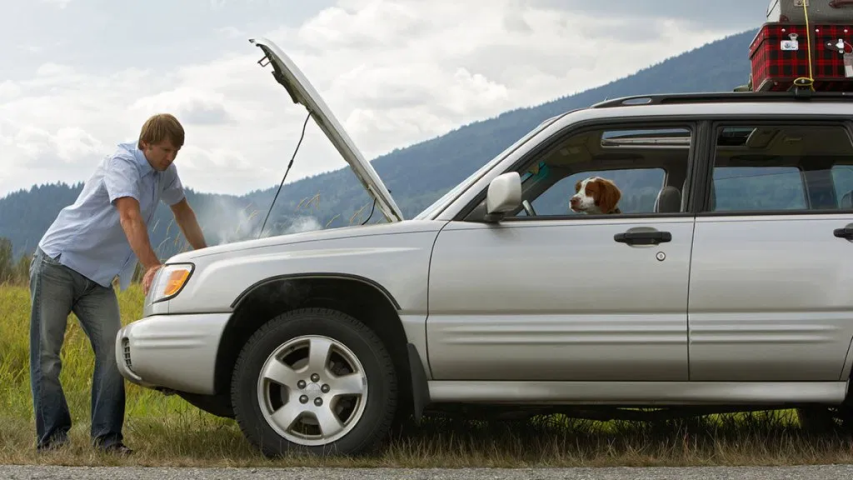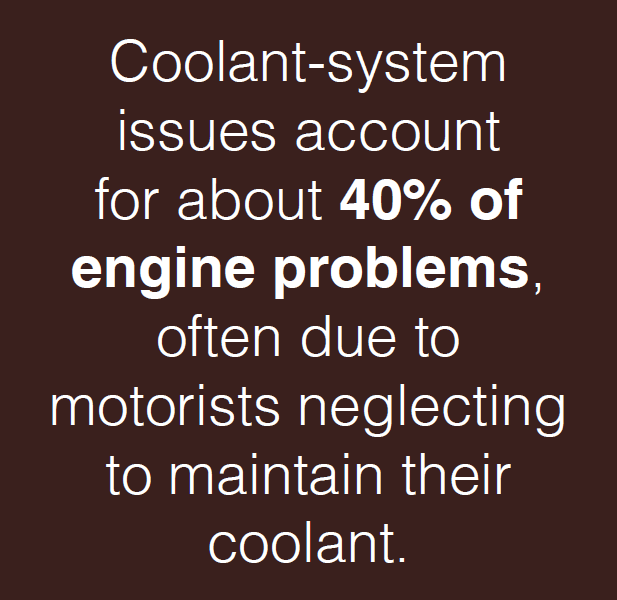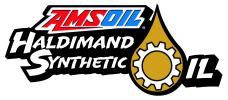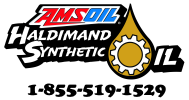
How important is engine coolant?
Coolant is a hard-working fluid. Heat produced by combustion must be removed to prevent overheating. Some of that heat escapes with the exhaust and some is absorbed by the engine block. But to keep heat within the engine’s operating temperature range, coolant must be pumped through the engine to the radiator, where excess heat can be dissipated.
Besides aiding engine-temperature regulation, a quality coolant will also protect against:
- Corrosion that damages metal components.
- Scaling that interferes with heat transfer.
- Cavitation and pitting that damage cylinder liners (heavy-duty applications).
Coolant-system issues account for about 40% of engine problems, often due to motorists neglecting to maintain their coolant. It’s easy to see why – coolant is a long-drain-interval product. With service intervals of around five years (and longer in heavy-duty applications), it’s not top-of-mind. Compare that to engine oil, which is changed at least yearly and sometimes more often.
Coolant Neglect
 Coolant neglect leads to all kinds of problems, particularly if using inexpensive conventional green coolants found at almost every retailer. For example, corrosion occurs when an imbalanced coolant chemically reacts with metallic surfaces, forming reddish deposits that can appear as sludge or slime. Fouling can occur from contamination of the cooling system by microorganisms that
create sludge and fouled surfaces with byproducts of rust or corrosion. As coolants age, the chemical protection of the metal surfaces breaks down and sludge accumulates.
Coolant neglect leads to all kinds of problems, particularly if using inexpensive conventional green coolants found at almost every retailer. For example, corrosion occurs when an imbalanced coolant chemically reacts with metallic surfaces, forming reddish deposits that can appear as sludge or slime. Fouling can occur from contamination of the cooling system by microorganisms that
create sludge and fouled surfaces with byproducts of rust or corrosion. As coolants age, the chemical protection of the metal surfaces breaks down and sludge accumulates.
Types of Engine Coolant
The additives in green coolants use inorganic-acid technology (IAT), which relies exclusively on inorganic salts such as nitrites, phosphates and silicates for protection. Formulating exclusively with inorganic salts has drawbacks. They deplete rather quickly and can lead to scale buildup and sludge if maintenance is neglected.
One solution is to formulate the coolant using organic-acid technology (OAT). These coolants don’t contain phosphates, silicates or other inorganic salts, virtually eliminating problems associated with conventional green coolants. They also last longer.
Another solution is hybrid organic-acid technology (HOAT). These coolants rely heavily on organic acids, but strategically use some inorganic salts to take advantage of their protective properties. A properly formulated HOAT coolant delivers long service life and excellent protection. Think of it as a beltand- suspenders approach to protection.
Engine Coolant Maintenance
Whichever coolant you use, it’s best to flush the system about every five years to maintain its health.
Some do-it-yourselfers simply place a drain pan under the radiator and open the petcock. While it’s better than nothing, this quick-and-dirty coolant service only removes about half the fluid.
Heavy-duty diesel operators often use supplemental coolant additives (SCAs). They’re designed to be added to the coolant about halfway through the service interval, replenishing the additives that have depleted.
That sounds like a decent solution, but SCAs have drawbacks. For starters, they’re a hassle. The operator must test the coolant using test strips and match the color of the strip to a chart. The risk is adding too much SCA, which can cause additive “dropout.” This occurs when the additives separate from the coolant base and form sludge and slime that plug coolant passages. Too much SCA can also lead to scale buildup, which inhibits heat-transfer.
Fortunately, there’s a better way. You can use a high-quality coolant that doesn’t require the hassle of SCAs and does a better job of fighting common problems like scale, sludge and slime.
AMSOIL Antifreeze and Engine Coolants
AMSOIL provides such a coolant: Heavy-Duty Antifreeze & Coolant (ANTHD). It uses a HOAT formulation that delivers excellent protection against overheating and corrosion for up to 1 million miles (1,609,344 km), 20,000 hours or 8 years, whichever comes first, and it doesn’t require the hassle of adding an SCA.
For passenger car/light-truck owners, AMSOIL Passenger Car & Light Truck Antifreeze & Coolant (ANTPC) features an OAT formulation that eliminates additive drop-out, scaling and other issues inherent to conventional coolants. It’s pre-mixed 50/50 with high-quality water and is compatible with all ethylene and propylene coolant colors.
AMSOIL Low Toxicity Antifreeze & Engine Coolant (ANT) is the solution for those who want a low-toxicity, biodegradable coolant. Its HOAT formulation delivers excellent protection for up to 150,000 miles (241,000 km) or 5 years, whichever comes first, in passenger cars and light trucks. In heavy-duty applications, it lasts 1 million miles (1,609,344 km), 20,000 hours or 8 years, whichever comes first. It’s compatible with all ethylene and propylene coolant colors.
The coolant system is critical for vehicle performance and longevity. If it’s been a while, now is an excellent time to give your system a flush and a fresh start with an AMSOIL coolant.






 Canada
Canada United States
United States